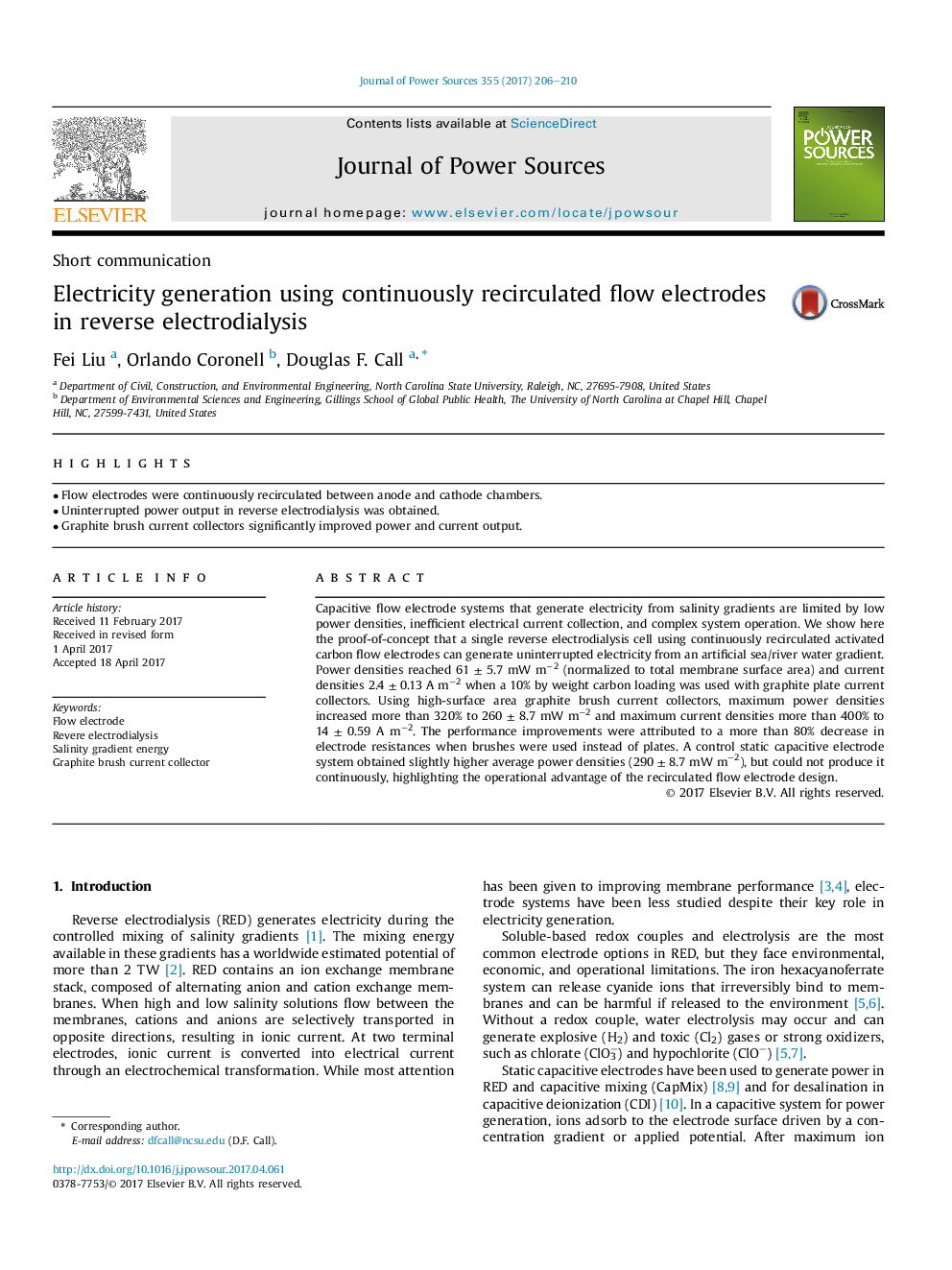| Article ID | Journal | Published Year | Pages | File Type |
|---|---|---|---|---|
| 5149121 | Journal of Power Sources | 2017 | 5 Pages |
Abstract
Capacitive flow electrode systems that generate electricity from salinity gradients are limited by low power densities, inefficient electrical current collection, and complex system operation. We show here the proof-of-concept that a single reverse electrodialysis cell using continuously recirculated activated carbon flow electrodes can generate uninterrupted electricity from an artificial sea/river water gradient. Power densities reached 61 ± 5.7 mW mâ2 (normalized to total membrane surface area) and current densities 2.4 ± 0.13 A mâ2 when a 10% by weight carbon loading was used with graphite plate current collectors. Using high-surface area graphite brush current collectors, maximum power densities increased more than 320% to 260 ± 8.7 mW mâ2 and maximum current densities more than 400% to 14 ± 0.59 A mâ2. The performance improvements were attributed to a more than 80% decrease in electrode resistances when brushes were used instead of plates. A control static capacitive electrode system obtained slightly higher average power densities (290 ± 8.7 mW mâ2), but could not produce it continuously, highlighting the operational advantage of the recirculated flow electrode design.
Keywords
Related Topics
Physical Sciences and Engineering
Chemistry
Electrochemistry
Authors
Fei Liu, Orlando Coronell, Douglas F. Call,
